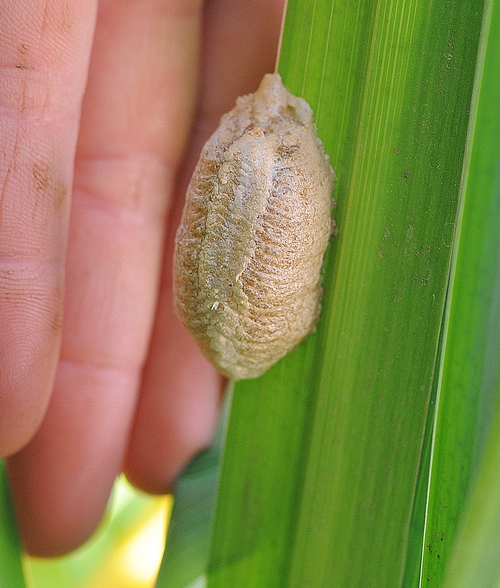Oct 12, 2009
Here's a "cold case" to investigate.
Check your backyard or neighborhood park and see if a praying mantis has deposited an egg case on a tree limb, plant or fence.
Case in point: Over at the Harry H. Laidlaw Jr. Honey Bee Research Facility, west of the UC Davis campus, a frequently watered potted plant attracts scores of honey bees seeking water to deliver to their hives.
It also has attracted a cunning praying mantis.
She just deposited an egg case on one of the stems, knowing that when her offspring emerge next spring there will be plenty of food for them.
Praying mantises (Tenodera sinensis) are fierce-looking, combative insects with voracious appetites. They'll eat any insect they can catch and overcome. And not just insects: they've been known to attack and kill everything from hummingbirds to mice.Call it a banty-rooster complex; nothing seems to frighten the pugnacious praying mantis.
About this time of year, the praying mantis deposits her eggs on a twig or stem or fence. The frothy secretion hardens into a shell to protect it from the elements and from predators.
Fast-forward to spring or nearly spring. When the weather warms, so will the cold case, and about 100 to 200 tiny mantises will emerge.
Hungry.
They'll be so hungry they'll even eat one another.
Can't find an egg case? Not to worry. Early next year, your local hardware store or nursery will probably have them--in the refrigerated section.
Attached Images:

Egg Case

Prey?